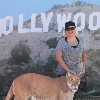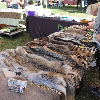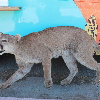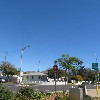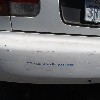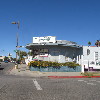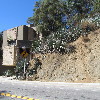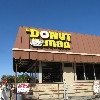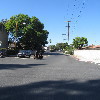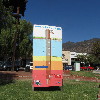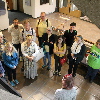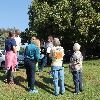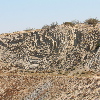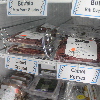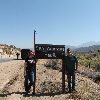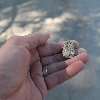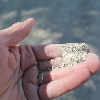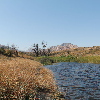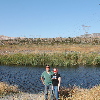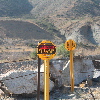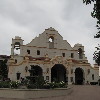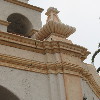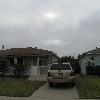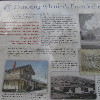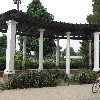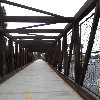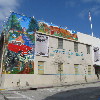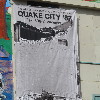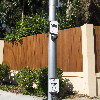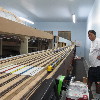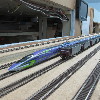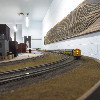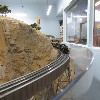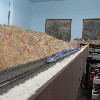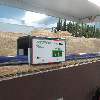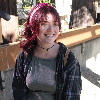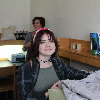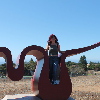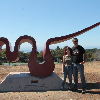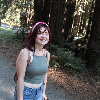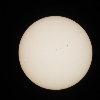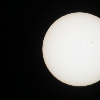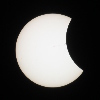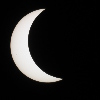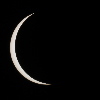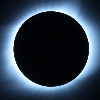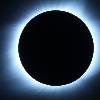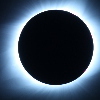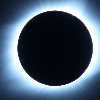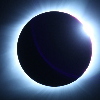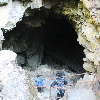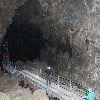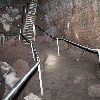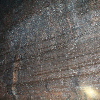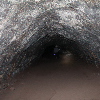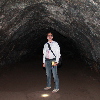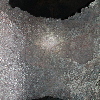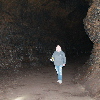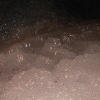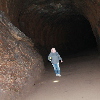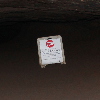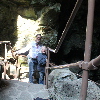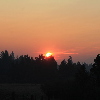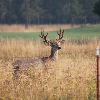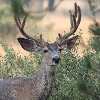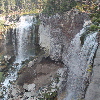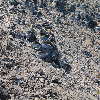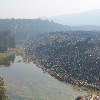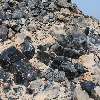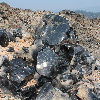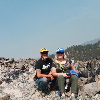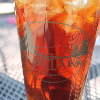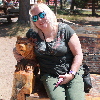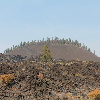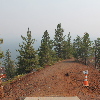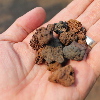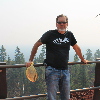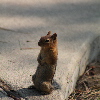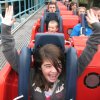So, after two volcanoes, some sloths, thousands of tiny salmon, and dinner with Aunt Karen, it was finally time for the real reason for the whole trip. The total eclipse, and we had good front-row seats in the back yard of Kathleen’s brother Johnny’s house in Salem, Oregon.
We got stupendously lucky with the weather. It was a perfect, clear blue sky when we woke up. I set up my telescope with the camera on a little portable workbench on the back patio. With the clock drive going, the telescope tracked the sun as it rose.
I snapped a few pictures of the sun through the solar filter just to see what it looked like, and to get the camera settings right. I’d used the filter before for the transit of Venus, and also a partial eclipse in 2012. But since I’d never seen a total eclipse before, I knew that I’d be guessing about the settings when that time came.
First contact was about 9:00AM or so, and it looked just like every other partial eclipse I’ve seen over the years. We just watched as the Moon slowly marched across the face of the Sun. It wasn’t until it was probably 90% covered that we could really notice that the light was getting dim, and right at the end, it got cold, too. But then, when the actual moment of totality came, it was like a switch was flipped, and I suddenly realized just why people travel all over the world to chase eclipses. It was really quite spectacular.
I pulled the filter off the telescope, and took some photos. I’d set the camera for ISO 800, and started with a guess of about 1/60 second exposure. Then I increased the exposure on each shot, just to see what it would look like. Because I’d forgotten the remote shutter-release thingy at home, I had to set the camera on a 2-second timer. That way, for each picture, I’d press the button by hand, and then the telescope and camera had two seconds to stop wiggling before the shutter tripped. For a last-minute workaround, it worked reasonably well. And besides, the enforced wait between pictures gave me some time to just look up a the sky, slack-jawed at the sight of the solar corona.
As the Sun started to reappear, I snapped a couple more pictures, and by sheer luck, I got a reasonably good picture of the ‘Diamond ring’ effect right at the end of totality. All told, it was a good time, and was easily the thing that made the whole trip worthwhile.
